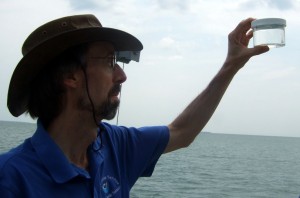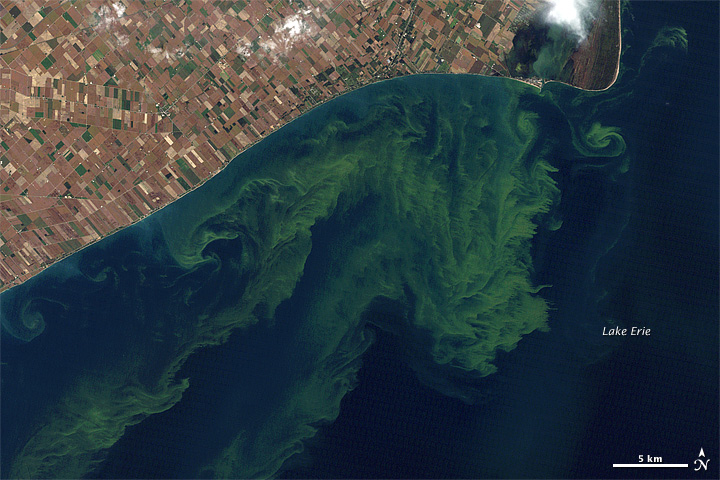It's a green, blue, brown or black slime that tends to foam and sometimes gives off a foul smell. And it could make you sick.
It's blue-green algae, and it's been a growing problem on Lake Erie in recent years. Last year it spread to the largest-reaching plume on record, and weather conditions could make this year equally bad or worse, said Doug Kane, assistant professor of science and math at Defiance College.
The News-Messenger.com - www.thenews-messenger.com
02 Apr 2012
K Smith Horn
Will plague of toxic algae accelerate a focus on Lake Erie?
Western Lake Erie is on fire -- metaphorically speaking.
At a recent University of Toledo College of Law workshop, speakers implored Michigan and Ohio residents to see the emerging parallels between western Lake Erie's record algae outbreaks in 2010 and 2011 and Cleveland's 1969 Cuyahoga River fire.
Their point: Sometimes it takes a major embarrassment to galvanize a region.
Public outrage over algae is finally getting through to the right people, but meaningful action has been a long time coming. The degree of commitment has yet to be seen, especially as the two states attempt to promote a more business-friendly atmosphere.
Western Lake Erie needs to become a stronger focal point for fertilizer runoff control, just as Cleveland was the focal point for better sewage treatment after the Cuyahoga caught fire. Cleveland lived with the embarrassment of being called the "mistake on the lake" for years.
Toledo Blade - www.toledoblade.com
03 Apr 2012
T Henry
















